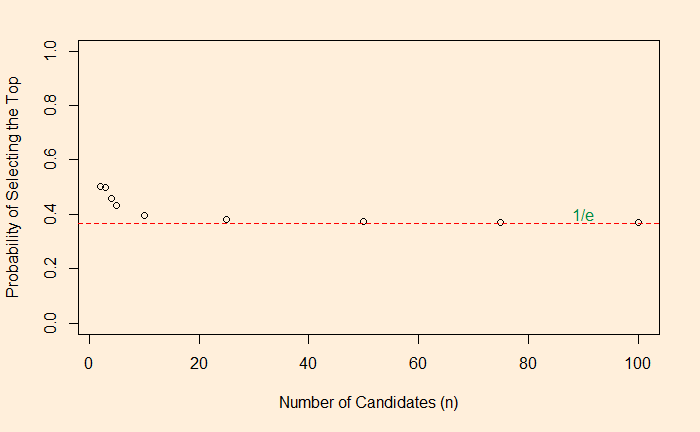At Least One
How many times do we need to throw two dice to have a 50% chance of getting at least double-six? We have seen several of these “at least” problems. The magic of solving those problems is to find out the probability of no chance and then apply the AND rule (the joint probability).
The probability of rolling a double-six is (1/36), and that for no double-six is (35/36). It is because there are 36 total combinations possible once you roll two dice, and one of them is the desired.
Let n be the number of rolls for the desired outcome. The probability to have n events producing no double-six is (35/36)n, which is then equated to 0.5 for 50% probability. Solve the equation for n; (35/36)n = 0.5 or n ln(35/36) = ln(0.5). n = ln(0.5)/ln(35/36) = 24.5 ~ 25 rolls.



